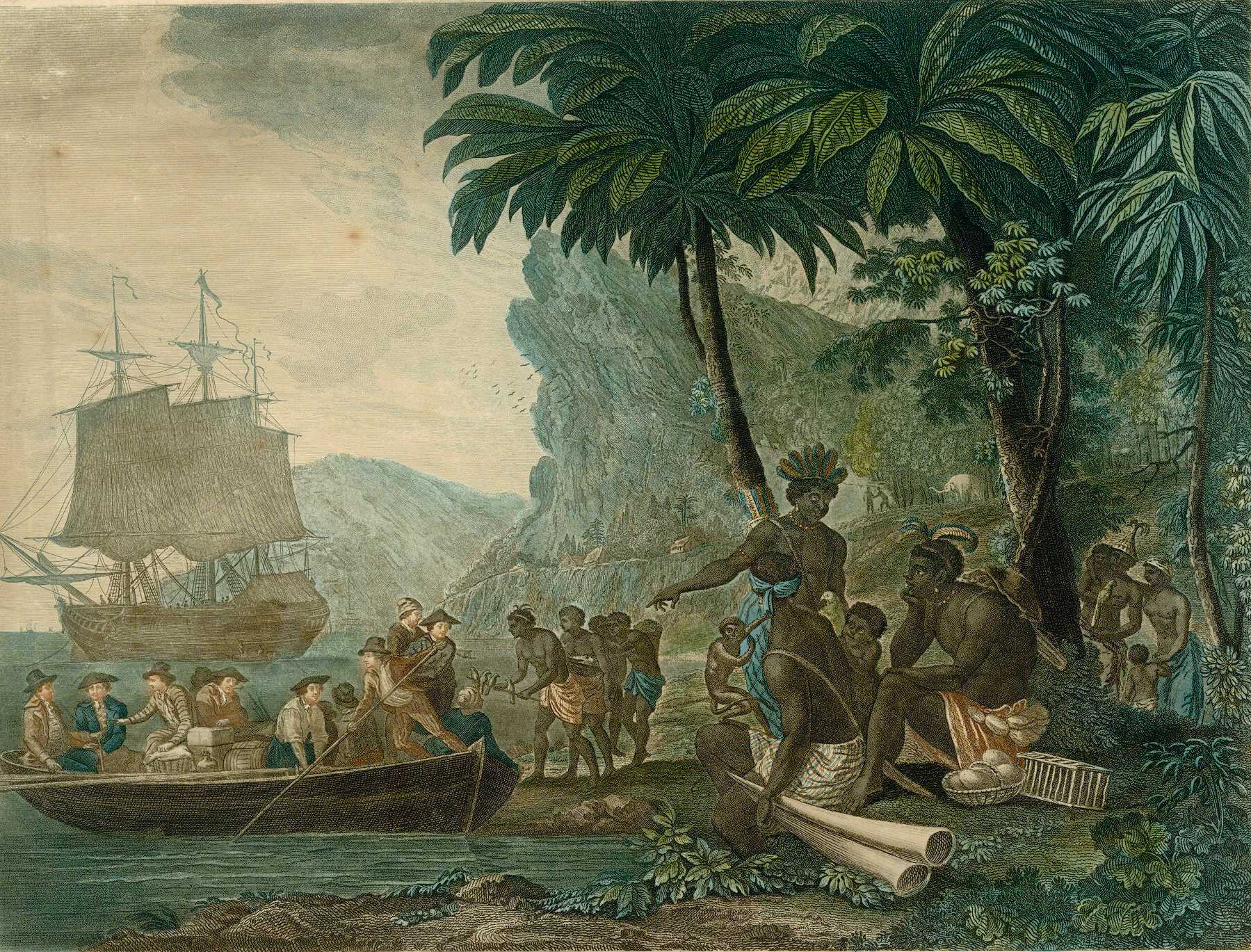Chapter 1
Slavery & the Emerging Global Economy
In the 15th century, people did not see themselves as Africans or Europeans. They saw themselves aligned with certain cultural groups and regions. People in the western African region were leaders and everyday men and women with intellect, culture, power and a sense of community. While people in the western European region sought new opportunities to expand their global power as they recovered from challenges including religious warfare, pandemic conditions and famine. They engaged in global trade, diplomacy, and cultural exchange. In the 1440s western Europe and western Africa were no longer limited by overland trade, and they connected along the Atlantic coast which opened new trade relations.
Eventually, the Western Atlantic became a site for colonization with fertile land to cultivate sugar, the driver of the transatlantic slave trade. The demand for profit and power came with a human cost. At the heart of the tension were the lives of enslaved African men, women and children and the moral degradation of enslavers and those who benefited from trade, both directly and indirectly.
Convergence of Cultures
When Africans and Europeans made contact along the western coast of Africa in the mid-15th century, they met as equals and established relationships based on trade. To gain inland access, Europeans relied on both diplomacy and aggression. Trading agreements with the Kongo, Igbo, and Jaga eventually permitted Europeans to build coastal trade forts, or factories, fortified by European militaries. These points of early contact and cultural exchange are reflected in the trade goods and religious iconography of the period on both continents.
Catholic missionaries meeting leadership in the Kingdom of Kongo
Enslaved and Free African People in Portugal
In 1441 the Portuguese completed the first successful European voyage to sub-Saharan Africa. Africa was not unknown to them. For centuries, scholars had traveled to Timbuktu to study at the acclaimed university there, and traders spoke of the overland routes where wealthy and well-organized countries controlled access to gold, salt, ivory, and textiles. Encounters with the peoples and nations of western Africa persuaded Europeans to sail further down the coastline to trade, convert, and, if possible, conquer.
Africans in Portugal, 16th Century
Early Contact
Trade Along the Coast
By the mid-1400s Europeans tried to break into African-controlled trade. They traveled along the western coast in search of gold and to attract Christian converts. Early contact opened the door to long-lasting profitable relationships that benefitted Europeans and some African leaders.
Trade Among Equals
When Africans and Europeans first made contact along the western African coast, they met as equals and established relationships based on trade. As trade developed, Africans permitted European traders to expand their commercial presence along the coast. Africans maintained control of trade in the interior.
Trade emissaries designated by individual rulers controlling trade along the coast, were responsible for negotiations and controlling trade relations with European representatives. Emissaries from the Benin Kingdom set terms for trade in gold, spices, textiles, literature, and enslaved people. By the 1600s the trade was more focused on enslaved African people, thus changing the relationship between these trade partners.
Tools of the Gold Trade
Malian emperor Mansa Musa (1280–1337), the wealthiest man in history and widely known for his seemingly endless gold supply, drew attention to the western African gold trade. Ashanti leaders used tools of the gold trade like those shown here.
Trade Weights
Early Ashanti gold weights included geometric designs and, later, symbols of trade, like this rifle. European trade weights included measurements and makers marks featuring crowns of European monarchies.
Early Trade
Strand of Cowrie Shells
Cowries from the Maldives in the Indian Ocean were used by Europeans as currency in the slave trade. They demonstrate the global reach of the trade.
Trade and Consumer Goods
Europeans traded glass beads for African coral and amber beads for enslaved people. Glass beads were produced by Europeans specifically for use in the slave trade and coveted by African consumers.
Negotiating Power with the King of Dahomey
Ahosu, King of Dahomey
When Europeans reached Africa, they encountered leaders with powerful trade negotiating skills and formidable armies. Europeans formed commercial and diplomatic relations with African nations to gain access to spices, textiles, precious metals, and salt. Priests often accompanied merchants and diplomats to gain a foothold in the rich countries of western Africa. Some people of western Africa rejected Christianity, and others welcomed it. The Catholic Church was instrumental in negotiations.
The king of Dahomey was a position of great power among the Fon people. Ahosu Houegbadja, considered to be the first king of Dahomey. He was a was a powerful and influential leader and noted for his success in strengthening the kingdom, establishing infrastructure, and building the royal palace. A powerful African kingdom, Dahomey was widely involved in trade, including the slave trade.
Trade Goods
British blunderbuss
French manilla
Europeans produced manillas and rifles for trade in western Africa. Manillas were used as a form of currency. Africans purchased rifles to use in warfare and to protect themselves from slave traders. European guns flooded into western Africa as trade goods to promote the warfare that delivered captives for the slave trade.
King of Kongo Receives Catholic Priest
King of Kongo Receives Catholic Priest
In the 1600s Dom Garcia, King of Kongo, strategically converted to Catholicism. His conversion positioned him to profit from the slave trade and protect his people from enslavement.
